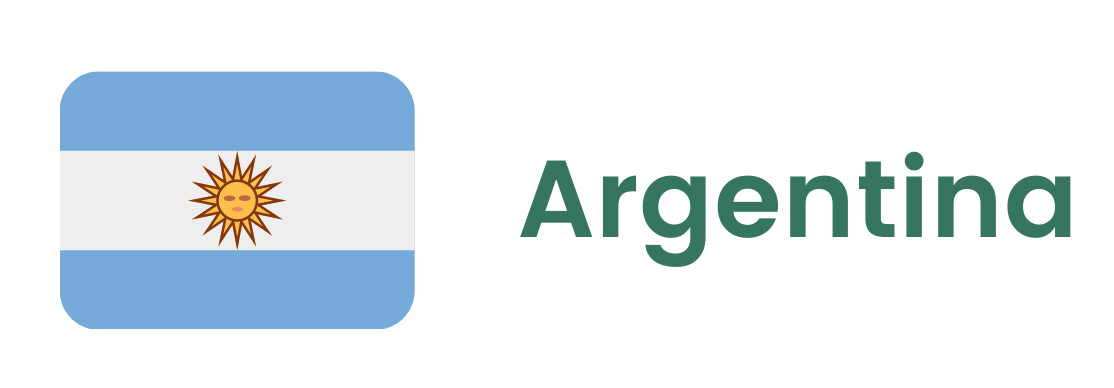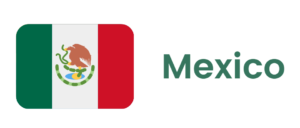Argentine Exports of Timber Products Showed Strong Growth of 34.5%

Slaughterhouse in the city of Guasapampa was shut down by the Ministry of Bioagroindustry due to illegal slaughter and conditions that did not meet sanitary standards. 300 kg of meat and equipment used for clandestine slaughter were seized. (Ministry of Bioagroindustry)
Emmanuelle Souberyran, Director General of the World Organisation for Animal Health, visited the Beef Promotion Institute to promote matters regarding public-private partnership, praising the effectiveness of the Argentine sanitary system, emphasizing the new strategy for foot-and-mouth disease vaccination, which is aligned with international standards. Furthermore, she guaranteed support in international negotiations. (IPCVA)
USA beef import market had a sharp rise in prices and tight supplies, with slow trading. In response to the market scarcity, the USA raised Argentina’s tariff quota from 20 thousand to 80 thousand tonnes. (USDA)
After the elections, the Argentine Rural Society asked the government and the new Congress to talk and reach agreements in favor of the agricultural sector. The main goal is to reduce taxes and production costs, in addition to improving infrastructure, especially in areas affected by bad weather. (Sociedade Rural Argentina)
Argentine exports of timber products showed strong growth of 34.5% in value during the first eight months of the year, driven by significant increases in the furniture, paper and cardboard and sawn timber categories. The USA consolidated itself as the main destination, absorbing 35.7% of the exports. (Secretariat of Agriculture)

Rabobank expects Brazil’s 2026 coffee crop to increase, easing global supply pressures and potentially lowering prices. The bank estimates that the 2025 harvest reached 62.8 million bags, with a drop in arabica and growth in robusta. Despite frost and hail damage, production could recover slightly, leading to a global surplus of 3.3 million bags in 2025/26 versus 1.7 million in 2024/25. (Rabobank)
October corn and soybean exports should show a decrease, but shipments remain higher than last year. The Brazilian Association of Cereal Exporters forecasted 6.19 million tonnes of corn and 7 million tonnes of soybeans, down from last week’s estimates of 6.57 and 7.34 million, respectively. Despite the revision, Brazil is expected to set a new annual record, surpassing 102 million tonnes of soybean exports from January to October of 2025. (ANEC)
Brazilian farmers planted 36% of the projected soybean area for the 2025/26 crop by October 23rd, matching last year’s pace. The weekly progress was 12 percentage points, though concerns remain about dry and hot weather in the Center-West. Summer corn planting reached 55% in the Center-South region, compared to 53% in the previous year. (AgRural)
Brazil held the ‘Frutas do Brasil Festival’ in Buenos Aires, aiming to strengthen partnerships and promote the export of fruits to Argentina, a country that has imported US$ 45 million in Brazilian fruits this year. The initiative, led by the government in cooperation with Abrafrutas and the Brazilian Trade and Investment Promotion Agency, seeks to expand markets, following the 10% growth in overall Brazilian fruit exports this year. (MAPA)
Wheat prices continue to fall. The dollar’s value and the large national stock are making it difficult for the crop’s price to increase. (Cepea)
Brazil will launch the initiative “Resilient Agriculture Investment for Net Zero Land Degradation” at COP 30, led by the Mapa and in partnership with the FAO, to mobilize resources and technologies for the global restoration of approximately 2 billion hectares of degraded agricultural land. The action aims to share Brazil’s model of sustainable production and strengthen national programs, such as Caminho Verde Brasil [Green Path Brazil], focusing on land restoration and food security. (MAPA)


The Agricultural Research Institute, linked to the Chilean Ministry of Agriculture, analyzes the increasing challenges of climate change and moves toward sustainable systems, launching a new edition of its technical information series: “Agroecology: Science, Territory and a Sustainable Future”. (INIA)
Mobilization of workers has halted operations at meatpacking plants in the Los Lagos and Los Ríos regions, affecting more than 50% of the country’s total meat production. The situation directly impacts livestock farmers, butcher shops, local businesses and families who depend on this food source. (Meatpackers’ Association of Chile)
The Agricultural and Livestock Service, the Institute for Agricultural Development and the FAO conducted a participatory workshop in Padre Las Casas to develop biosecurity strategies for small-scale poultry farming. The initiative, which is part of the global One Health project, focused on preventing zoonotic diseases and improving agricultural resilience, resulting in the creation of local roadmaps to strengthen the existing support programs of the SAG and INDAP for family farming. (FAO)

Costa Rica, along with four other countries, was officially removed from the FAO Hunger Map in 2025, a historic achievement driven by strong social policies and support for family farming, according to Máximo Torero Cullen, Chief Economist. (FAO)
The Ministry of Agriculture, the National Institute of Innovation and the FAO are developing an initiative to adapt the agricultural sector in Guanacaste, which is part of the Central American Dry Corridor, to climate variability. The initiative focuses on promoting silvopastoral systems, sustainable soil management and efficient water use, including precision technology, aiming for positive results in livestock production and ecosystem conservation. (FAO)

President Daniel Noboa delivered tractors, property titles and technology packages to farmers in Santo Domingo de Los Tsáchilas and other provinces. According to Noboa, this action aims to support the productive sector and economic decentralization, which has already resulted in a 26.7% growth in the province. (Ministry of Agriculture)

The ancestral agricultural system Metepantle, in Tlaxcala, Mexico, was recognized by the FAO as a Globally Important Agricultural Heritage System, becoming the third in the country, alongside the chinampas of Xochimilco and the Mayan milpa of Yucatán. The honor, received during a ceremony with the Director-General of the FAO, Qu Dongyu, and Mexican authorities, highlights Metepantle as a global model of sustainability, conservation and food sovereignty, based on millennia of farming wisdom. (FAO)


Ministry of Agriculture is supporting tomato farmers in the Department of Guairá by distributing seeds as part of the “Summer Tomato Plan”. This action aims to combat seasonality, ensuring the supply of the local market and reducing dependence on imports during months of scarcity, in addition to strengthening family farming and school feeding programs. (Ministry of Agriculture)

Peru is expected to consolidate itself as the world’s leading exporter of table grapes, with a projected export value set to surpass US$ 1.9 billion by the end of 2025. This result is supported by an 82.5% increase in production over the decade and the logistical advantage provided by the Port of Chancay, which optimizes shipments to crucial markets, especially in Asia. (Ministry of Agriculture)

Uruguay is discussing the creation of the ‘Co-Responsible Sanitary Veterinarian’ as a voluntary role, auditable by the Ministry of Agriculture, intended to professionalize sanitary management on farms. This professional will plan, register and be accountable for the establishments entire health plans, aiming to increase commercial robustness, ensure sanitary traceability and meet the growing demands of international markets. (Ministry of Agriculture)
A multi-farm irrigation project was presented at the Artigas Rural Development Roundtable, aiming to irrigate 150 hectares of artificial pastures in Colonia Artigas. The initiative will utilize 1 million m3 of water. (Ministry of Agriculture)

READ MORE:

